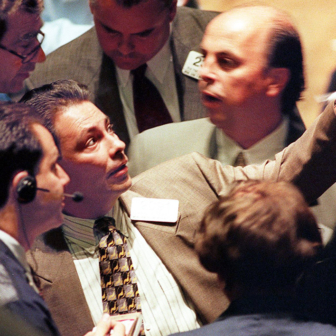When corporate regulator ASIC commenced proceedings against Australian Stock Exchange Limited earlier this month, readers of the business pages might have considered it no more than a blemish on the company’s otherwise impressive performance. ASX Limited is not your average publicly listed company though. Established in 1987, it has the right to operate Australia’s major equities (or share) market, a privilege that has made it one of the world’s top ten asset-exchange operators.
Around 10.2 million Australians own shares directly in Australian public companies and many of the rest hold shares indirectly, either through their superannuation funds or via managed investments. In fact, superannuation funds and other institutional investors hold up to 43 per cent of the ASX 200, the top 200 companies on the ASX. Preserving investor confidence and market integrity is central to the stability of financial markets and the general health of Australian households and the economy. If the ASX falters, the consequences are serious for the retirement funds of every Australian.
In its notice of filing, ASIC alleges that ASX Limited engaged in false and misleading conduct and made false or misleading statements in relation to a major technology upgrade, known as the CHESS replacement project, that ran between 2017 and 2022. Those are serious charges both for a market that depends on accurate information being shared with investors and for a company at the centre of Australia’s financial system.
The digital platforms operated by ASX Limited and its subsidiaries enable investors to buy and sell shares, electronically traded funds, fixed income products, derivatives, commodities and energy. Of these, the equities market is the largest and best known, trading 800 million shares and electronically traded funds — together worth $3168 trillion — in 2022 alone. ASX Limited operates these markets under ASIC and Reserve Bank licences that give it an effective monopoly over virtually all facets of exchange trading in Australia.
The engine of the equities market is the ASX’s Clearing House Electronic Sub-register System, known as CHESS, which manages the settlement of share trades and records changes in share ownership. Without a functioning CHESS system, clearing and settling an average of 1.75 million daily share transactions would be chaotic — so chaotic that share trading would effectively grind to a halt, risking a massive loss of confidence in the sharemarket itself and posing a danger to the entire financial system.
ASX Limited developed CHESS thirty years ago as part of the process of converting from physical share certificates to electronic ones. Although it was originally regarded as a world-leading system, sometime around 2014 the ASX began considering options for its replacement. It wanted to retire obsolete technology, upgrade hardware and security, and expand the system’s functionality.
ASX Limited announced its intention to replace its existing CHESS system using distributed-ledger technology in December 2017, with Digital Asset Holdings LLC as partner. Elmer Funke Kupper, ASX’s chief executive at the time, expressed lofty ambitions for the project. This was no mere “replacement,” he said. It was “innovative re-engineering.”
Five years later, the much-vaunted but only partly completed project was abandoned following a scathing review by management firm Accenture, and ASX limited was forced to write off $250 million in costs. ASIC quickly placed conditions on ASX’s CHESS licences and senior executives and the chair of the ASX board were called before the Parliamentary Joint Committee on Corporations and Financial Services to explain themselves.
What went wrong? ASIC alleges a collective failure by the ASX board and its senior executives. As evidence, it points to the gap between the project’s real progress, or lack of it, and reassuring public comments made by the company on 10 February 2022. Despite tracing the responsibility back to those individuals, though, the regulator has chosen to pursue the company for misleading and deceptive statements rather than the board and management for a failure of corporate governance.
Two areas of governance failure emerged from the project’s collapse: a failure of the mechanisms by which the company is directed and controlled; and a failure to properly manage and supervise the project. The second of these, the failure of project governance, has not received as much press attention, perhaps because botched technology projects have become a well-accepted business risk. Yet it is dangerous to dismiss the CHESS replacement project as just another technology failure. The legacy CHESS system and its proposed replacement are essential pieces of public infrastructure.
Documents provided to the parliamentary inquiry and assessments by the Reserve Bank reveal project governance failures on many levels. The CHESS project’s core objectives were never properly formalised before work started. The ambitious project would use nascent distributed-ledger or blockchain technology at a scale no other clearing and settlement exchange had contemplated. Project specifications, milestones and timelines kept changing, with the result that a formal design was never completed. ASX Limited and its technology partner, Digital Asset, worked in silos without a shared understanding of the project. The new system’s capacity to manage high levels of share trading wasn’t properly tested until 2022, making it unclear whether the proposed distributed-ledger technology was a viable replacement for the existing system.
Although the project probably began running off the rails in 2020 (as William Klein and I argue in our submission to the parliamentary inquiry), the problems didn’t become fully evident until 2022. Yet ASX Limited informed the market in its February 2022 statement that the project remained on track to “go live” in April 2023 and was “progressing well.” These statements were misleading and deceptive, says ASIC; the project was not tracking well and there was no reasonable basis for implying otherwise.
The Reserve Bank’s annual accountability assessments from 2014 onward reveal that ASX had a long history of technology governance problems. Beginning in 2020 they document real concerns about the management of the CHESS project by ASX senior executives. As those concerns elevated, the Reserve Bank began requiring ASX to provide assurances that the project was on track and would fulfill its functionality requirements.
In May 2022, in response to ASX’s announcement of a further indefinite delay in the project, ASIC and the Reserve Bank lost patience and requested ASX appoint consultancy firm, Accenture, to conduct the independent review. Accenture’s findings are best summed up in this finding: “The program lacks a holistic, agreed, single view of status with adequate traceability of resources and estimation to the draft delivery plan.”
In Accenture’s view, the hybrid implementation — with ASX Limited and technology partner Digital Asset jointly managing the project — was at fault. Not only had management become siloed, but the partners’ views of their respective accountabilities were out of alignment. The ASX executive management team’s insufficient rigour added to problems of risk management and robust testing. Accenture determined that the draft delivery plan was too risky, based on high-level estimates rather than detailed evidence that milestones were being achieved and underlying concerns dealt with.
Given the problems Accenture identified, it is not hard to imagine how ASX executives came to be so wrongly optimistic in their statements about the project. That lack of awareness and experience appears to have extended to ASX’s board of directors. Directors interviewed for the Reserve Bank accountability assessment in 2021 admitted they were not fully informed about the progress and status of the project.
The lack of alarm is perhaps explained by the fact that board members shared the ASX executive team’s lack of expertise or experience in digital transformation projects, despite ASX Limited being a technology company with a full slate of such projects.
It is hard to understand how this situation was allowed to continue for so long. Assuming the board or a board committee approved the fateful February 2022 statement, those involved appeared to lack the knowledge and skills to question the veracity of the statements eventually made. When it’s filed, ASX’s defence to ASIC’s claim should make for interesting reading.
Tony Boyd, an Australian Financial Review columnist who has closely followed this story, contends that the ASX board failures were symptomatic of a larger problem in Australian corporate governance. Companies focus too closely on legal compliance, he says, at the expense of business viability considerations like progress of the CHESS replacement. It’s an interesting observation but not one that takes full account of the more essential requirement revealed by this tale of woe: the need for deep technology governance skills and experience among the board members and senior staff of technology-dependent companies.
It’s a point the current ASX board would itself concede. In 2022, it established a technology committee for the first time and appointed a new non-executive director with digital transformation experience to chair it.
Where does ASIC’s litigation leave us? Yes, the regulator is pursuing ASX through the courts, but the action is against the company, not the executive or the board. Additional questions could be asked as to whether the ASX is fit to hold a CHESS licence, but that is for the Reserve Bank and ASIC to decide.
For its part, the ASX has written off $250 million in lost project costs. Some management responsibility has been taken, with chief executive Dominic Stevens resigning in February 2022 and his performance bonus cancelled. Among other senior staff changes, a former Westpac technology executive has been appointed as the CHESS replacement project director.
But the ASX board is so far largely unchanged. Longstanding director Damian Roche remains chair, a position to which he was appointed in 2021. This, despite some ASX directors acknowledging in 2021 that they lacked the critical knowledge, expertise and experience to challenge executive reports on the CHESS project. Without that expertise, it might be asked how they could ever have effectively performed their fundamental role of overseeing ASX executive management of technology projects. At the very least, Roche’s position as board chair is untenable and he needs to resign.
ASX is, after all, a digitally based business dependent on many forms of technology and involved in many technology projects. More importantly, the terms of ASX’s CHESS licence emphasise the need to avoid systemic risk in the operation of CHESS facilities. And ASX directors’ fees are not inconsiderable: in the 2022 financial year the chair received $550,000 and the other non-executive directors each received $235,000, with additional fees for board committee memberships.
In June last year, ASX Limited announced a CHESS Replacement Release 2 project to be delivered in two phases with an anticipated completion date of 2030. Given past experience, it is to be hoped that management and the board are keeping a more robust eye on its progression. In the meantime, a major piece of public infrastructure, considered by the ASX to need replacing more than ten years ago, cannot be allowed to fail. Both the company and all investors in the equities market have no choice but to punt on it continuing to operate. •




